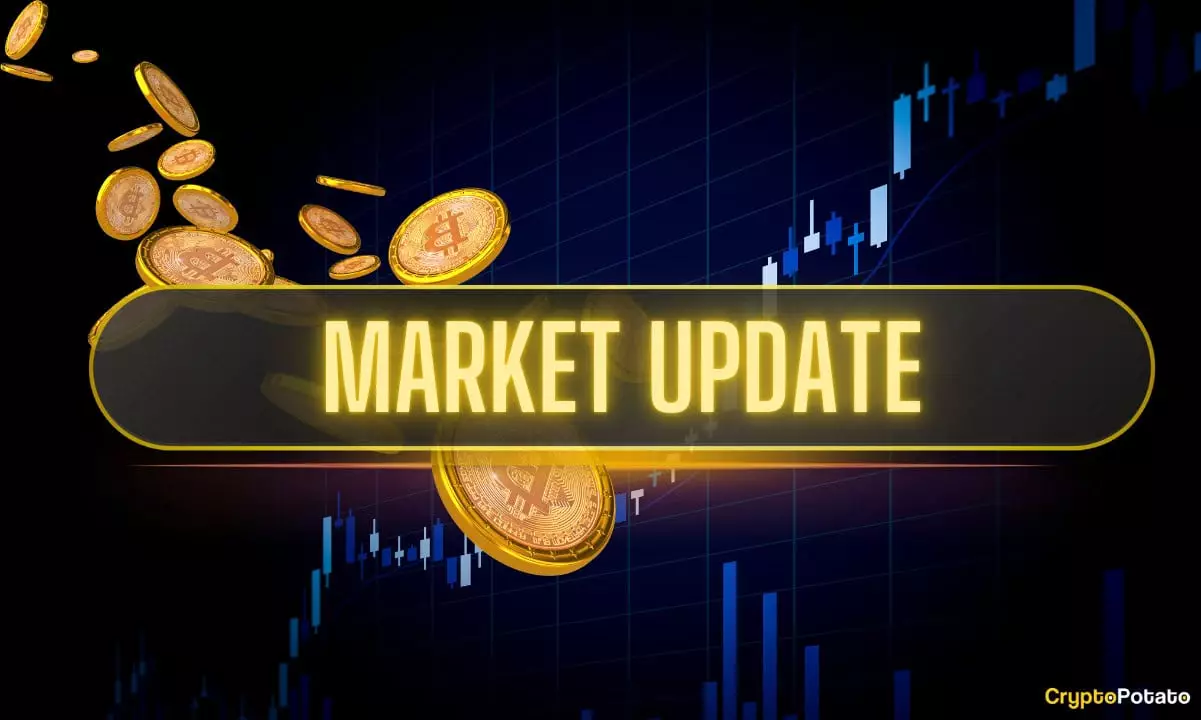In recent weeks, the cryptocurrency market has endured one of its most turbulent periods, not due purely to typical market cycles but triggered by an unprecedented geopolitical escalation—namely, the confrontation between Iran and Israel, amplified by the United States’ military involvement. While skeptics often presume crypto markets to be isolated from traditional macro risks, this episode proves otherwise. The overlap between institutional investment in cryptocurrencies and traditional financial assets has deepened, resulting in correlated price swings that erode any illusions of crypto’s immunity to global shocks. Bitcoin’s flirtation with the $100,000 mark — dipping below, then quickly bouncing back — underscores how fragile yet surprisingly durable the market can be in the face of crisis.
The immediate reaction was severe: over a billion dollars in liquidations, driven by panic selling and leveraged positions being forcibly closed. Yet, within days, a discernible de-escalation unfolded, precipitated by the US president’s sudden announcement of a ceasefire and what many interpret as a controlled retaliation by Iran. The market’s recovery, particularly Bitcoin’s rebound to $108,000, was remarkable. This episode challenges the prevailing narrative that crypto is a purely speculative, reactionary asset. Instead, it highlights its emerging maturity and increasing role as a diversified store of value that can weather shocks, albeit imperfectly.
Bitcoin’s Dominance Reinforced, But Altcoins Falter
While Bitcoin demonstrated resilience, altcoins suffered a notable blow. The data paints a clear picture: many altcoins dropped between 4% and 10%, revealing once again the immense concentration of value and investor confidence in Bitcoin. This disparity amplifies an overlooked dynamic in the crypto ecosystem — the dominance of Bitcoin is not just in market capitalization but in perceived safety and reliability during tumultuous times. In a way, this echoes traditional capital flight patterns seen in conventional markets where investors gravitate toward blue-chip stocks amid uncertainty. However, it also raises uncomfortable questions about the long-term viability and diversification benefits of altcoins.
Is the crypto market truly diverse, or are many alt assets merely speculative plays aspiring to catch Bitcoin’s tailwind? For anyone holding a significant alt portfolio, this asymmetric behavior should prompt a reevaluation of risk and exposure, especially in a landscape where geopolitical shocks and regulatory crackdowns can dramatically tip scales.
Adoption Milestones: Mastercard and Chainlink’s Partnership
Amid the chaos, one beacon of genuine progress gleams: the partnership between Chainlink and Mastercard. This is not just yet another announcement but a monumental leap toward mainstream adoption. By enabling 3 billion Mastercard users to purchase crypto effortlessly, this collaboration exemplifies what integration into everyday financial infrastructures looks like. The collaboration symbolizes the gradual convergence of traditional and digital finance, signaling a shift in public perception.
Yet, it should be noted that such partnerships are as much about market positioning and future-proofing as they are about immediate impact. It’s a tacit acknowledgment by established financial giants that cryptocurrencies are not fringe curiosities but central financial instruments that must be embraced—not feared—to remain relevant.
Legal Battles Drag On: Ripple and the SEC Saga
Whereas some aspects of the market advance, others descend into frustrating limbo. The ongoing legal battle between Ripple and the SEC epitomizes this inertia. Market participants had hoped for a resolution, expecting an indicative ruling that could settle the dispute swiftly, but the judge’s rejection of the motion merely extends uncertainty. This prolonged legal ambiguity is damaging not only to Ripple but to the broader regulatory landscape surrounding digital assets.
Ripple’s predicament serves as a cautionary tale: crypto innovation thrives only when regulatory frameworks provide clarity and fairness. The SEC’s aggressive and sometimes opaque enforcement strategy threatens to push innovation offshore and fuels the narrative of a US regulatory environment that lags technological progress. Investors and startups alike are left navigating a precarious path, caught between the promise of decentralization and the realities of centralized government oversight.
Market Fundamentals: Absorption of Massive Bitcoin Sales Points to Strength
Despite the drama, underlying market fundamentals tell an optimistic story. Approximately 720,000 BTC have been sold recently — a staggering volume mostly offloaded by newer holders. Yet, the market absorbed these sales without plummeting, a testament to mature demand and deeper liquidity pools. Such absorption contrasts with previous sell-offs, where large Bitcoin unloads precipitated severe price drops. This dynamic signals a more sophisticated buyer base, one likely supported by institutional participants and long-term holders.
Moreover, the gradual increase in the Long-Term Holder (LTH) to Short-Term Holder (STH) ratio historically heralds substantial rallies. Prior to Bitcoin’s surges from $28,000 to $60,000 and then $60,000 to $100,000, this ratio climbed, suggesting accumulation and investor conviction. While history never repeats perfectly, it certainly “rhymes.” This metric embodies the silent confidence underpinning market sentiment, which volatile headlines and price swings cannot fully disrupt.
Looking Beyond the Noise: A More Nuanced View of Crypto’s Future
In navigating this chaotic time, the crypto market reveals its dual nature: vulnerable yet surprisingly robust; innovative yet challenged by regulatory inertia. The recent geopolitical crisis exposed cracks in crypto’s independence from broader markets but simultaneously showcased Bitcoin’s unmatched resilience and growing institutional underpinning. Strategic partnerships – like Chainlink and Mastercard – highlight the sector’s evolving infrastructure and increasing mainstream legitimacy.
However, persistent regulatory uncertainty, exemplified by the Ripple lawsuit, threatens to stall progress. The US risks squandering its dominance by alienating innovators and retreating into protectionism instead of crafting clear, balanced regulations that foster growth. For investors with a center-right liberal perspective, promoting free markets alongside a clear rule of law, this is a crucial moment to advocate for reforms that uphold innovation without compromising security and fairness.
The crypto ecosystem is far from perfect; it is rife with speculation, volatility, and regulatory complexity. Yet, it remains one of the most dynamic frontiers of financial evolution. Smart investors must cut through the chaos and discern the underlying signals of strength and maturation, positioning themselves not on hype but on resilience and fundamentals.

